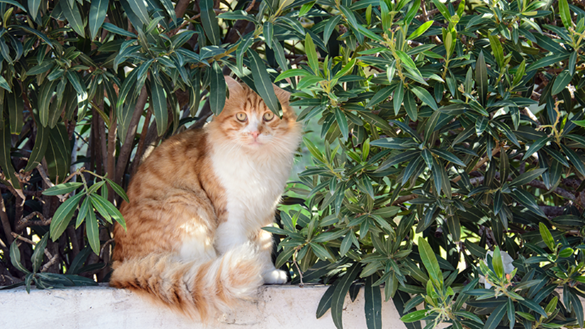Five Ways To Keep Your Cat Safe
Keeping an outdoor cat safe
Allowing your cat to explore the outside world can be great for their natural instincts and general health. Learn how you can keep them safe from harm.

Deciding whether you want your cat to be an indoor cat or an outdoor cat can be a tricky decision, particularly as there are pros and cons to both.
Having an outdoor cat means your cat will never feel confined in its home, and they’ll be allowed to follow their instincts and develop their skills like hunting. However, if you do decide to let your cat outside, then you’ll need to be aware of the risks of an outdoor pet. Striking a good balance means you can keep your cat safe while allowing them their freedom.
1. Microchipping
One of the most important aspects of having an outdoor cat is to microchip them. Each microchip is inserted just under the skin and carries a unique number that’s stored on the national database. If your cat ever gets lost or is involved in an accident, a quick scan of the microchip will show up your details straight away. If your pet isn’t microchipped, it can be harder to track them back to you in an emergency.
The microchipping procedure is incredibly quick and simple, so be sure to chat to your vet to discuss the best option for your cat.
2. Preventative healthcare
An outdoor cat will naturally get exposed to more infectious diseases and parasites lurking in the environment, so it’s important to give them regular treatment for worms, ticks and fleas.
Your cat should also have all its vaccinations and regular boosters to protect them from infectious diseases, some of which can be fatal.
3. Restrict them to the garden only
Preventing your cat from going any further than your garden means you can keep them safe while allowing them to explore and use their natural instincts. Your garden can be a great place to play, climb and hide for a cat, as well as the perfect environment for bonding together through training and exercise.
To restrict the area, you could used cat-proof fencing or build a small cat enclosure that attaches to existing barriers.
4. Have a curfew
Night time is the most dangerous part of the day for cats, as visibility on the roads is reduced and predators such as owls and foxes are most active. Bringing your cat inside at night will reduce the risk of them getting into fights with other cats or worse.
If a curfew is unlikely, we suggest putting a reflective collar on your cat to make it more visible at night. We also recommend installing a cat-flap to ensure they have access to the house, and if possible, programming it so your cat can only leave the house at set times.
5. Neuter or spay your cat
Unneutered male cats are more likely to roam at night in order to find a mate, and are more likely to get into fights with other cats. Spaying your female cat also means there won’t be unwanted or unplanned pregnancies. Find out more about neutering your pet.
It's also worth being aware that cats who go outside are at greater risk of road traffic accidents, being lost or stolen.
Speak to your vet to book an appointment

Medivet Healthcare Plan
On average our clients save an average of £225 with the Medivet Healthcare Plan.
Learn more

